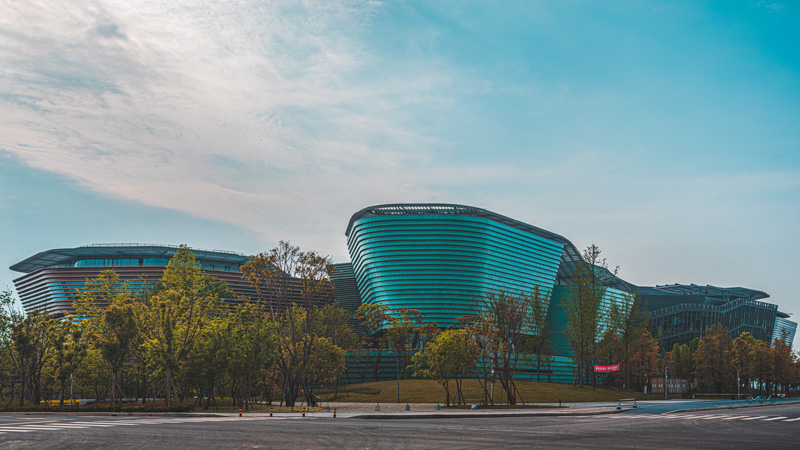
Jointly created by LOPO and the architects in recent projects, be it for white background cracked glaze texture or a crackle celadon-glazed texture, the cracked glazed terracotta panels bring a unique porcelain texture to the building facade. The Museum of the Song Porcelain Culture Center in Suining City, which is expected to be fully completed and open to the public this year, is the latest application of this architectural product.
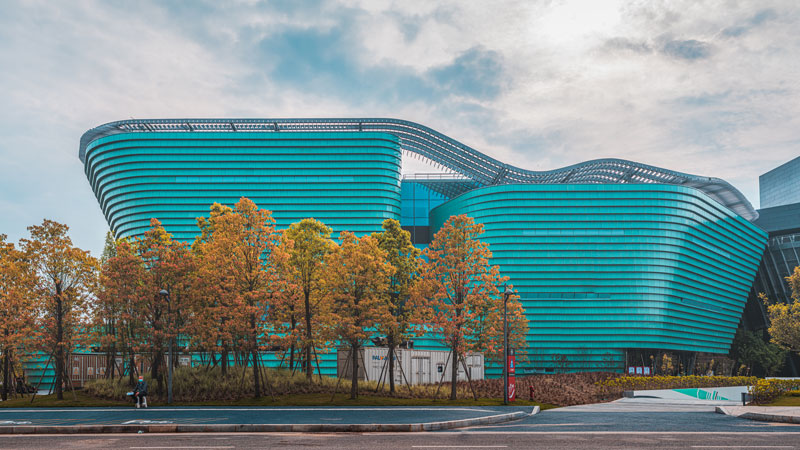
The Song Porcelain Culture Center is located in the Wucai North Road, Hedong New District, Suining City, Sichuan Province. With an overall floorage of 121,600 square meters, among which 75,300 square meters are above ground while 46,300 square meters are underground. The Culture Center is home to the museums, exhibition halls, science and technology museums, libraries, cultural centers, intangible cultural heritage centers, archives centers, Children’s palaces, to name but a few.

Chaired and designed by Mr. Cui Kai, academician of Chinese Architecture and Design Research Group, the architectural plan fully takes the natural environment (hilly and mountainous) of the of Suining City and the cultural elements of the porcelain capital into consideration. The project features a natural and flexible architectural style, continuing and extending the glorious history of Suining as the earliest and largest Song Porcelain cultural relics base in China.

The cultural center presents an overall style of green, open and flexible architectural layout. The structural form of the basement adopts reinforced concrete structure while the above-ground part chooses a steel frame structure. Inspired by the textures of the hilly landforms of Suining City, the architects further blend the “lotus leaf” element into the architectural form. The building stretches itself softly and gently, resembling the shape of blooming lotus leaves.
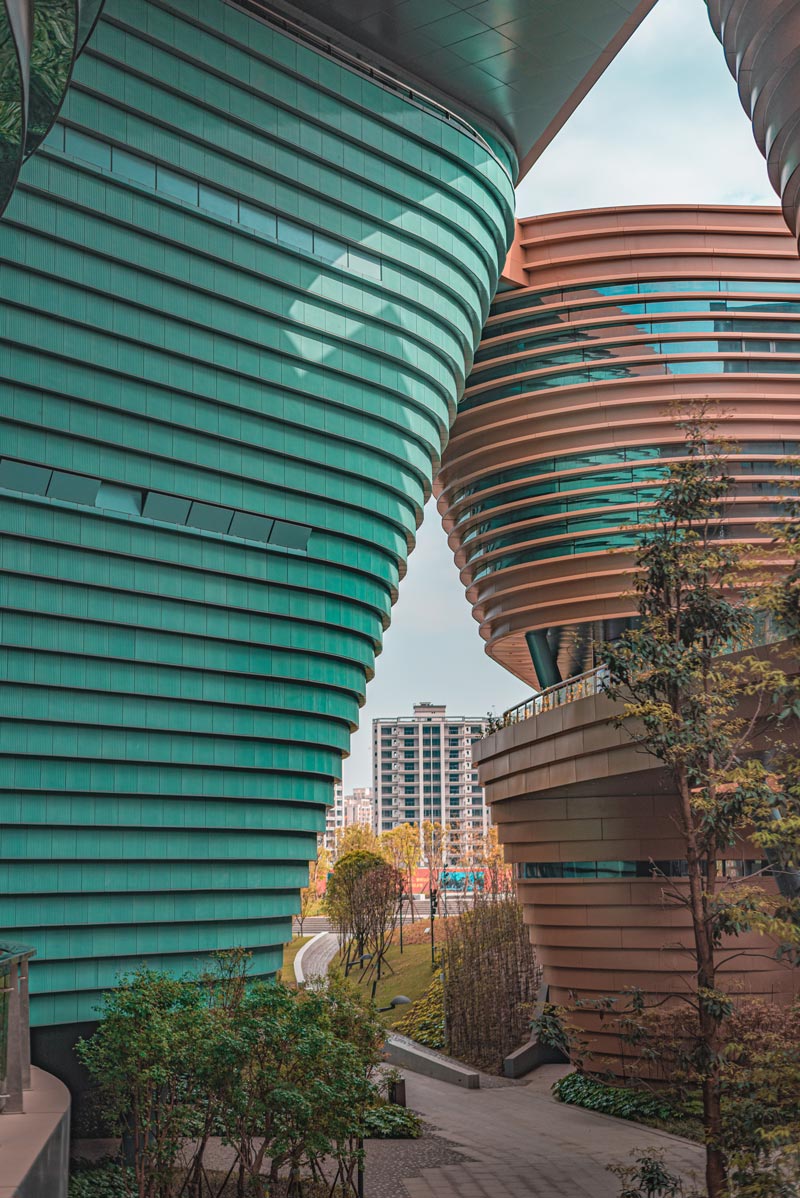
All buildings follow the shape of an inverted cone and naturally form a rain-shielding space, allowing the public to walk across various venues with ease while protecting them from the raindrops. In the facade of each venue, additional laminates and floors are added, offering a semi-outdoor space which enhances the use of space and improves the comfortable experience of the public.
The landscape of the project fit perfectly with the nearby wetlands, extending the ecological friendliness to the buildings. The above-ground landscape retains the altitude difference of original terrain, and forms a dynamic and vivid landscape through green islands, water ponds and other elements.
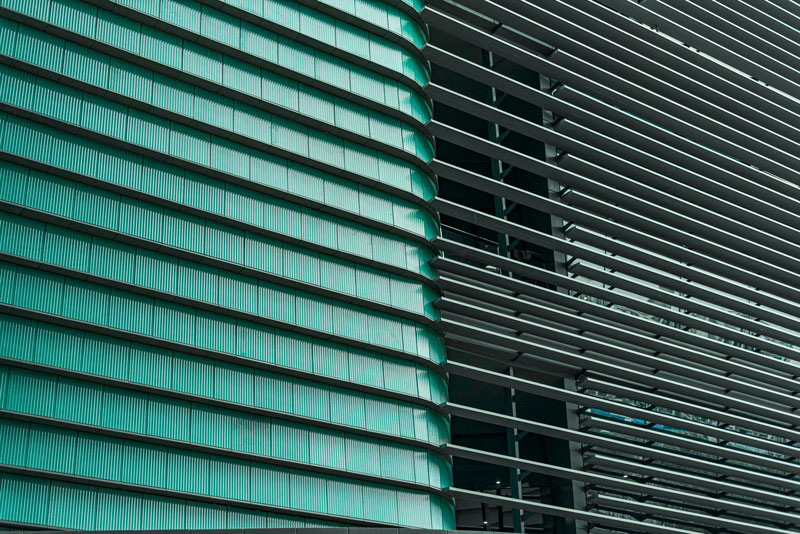
LOPO participated in the terracotta curtain wall project of the Museum of the Song Porcelain in District D of the Cultural Center, with a total area of nearly 6,000 square meters. Among the cultural relics of Song porcelain unearthed in Suining, the Longquan celadon porcelain and Jingdezhen celadon porcelain are the most precious ones, with fairly high historical, artistic and cultural values. Therefore, the architects ingeniously adopted celadon-glazed terracotta facade panels in the facade design to highlight the beauty of the celadon in a glorious manner. The smooth wavy surface texture injects rich visual effects to the facade, echoing the shape of the 'lotus leaf in the water' of the cultural center. The stacked terracotta siding resemble the green ripples, and the shining texture of the celadon-glazed porcelain amid different light and shadow conditions is quite impressive.
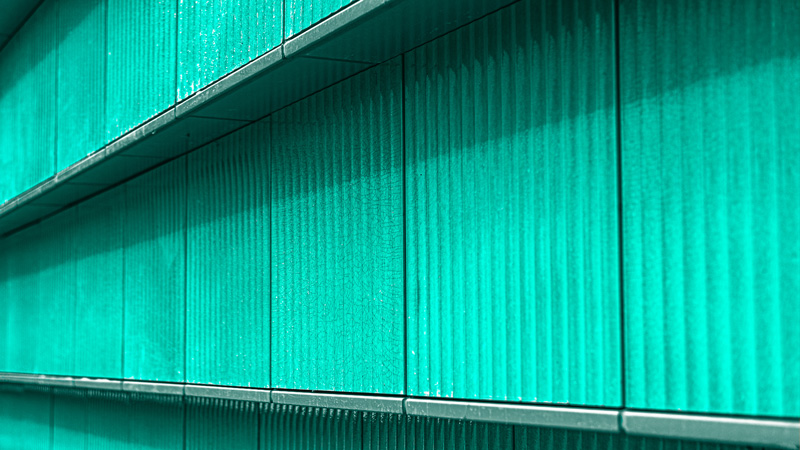
When it comes to this custom-made cracked glazed terracotta facing, LOPO designed the corrugated texture panels with 8 different widths (range from 300mm to 750mm) and 17 different heights to meet the facade requirements of the project's curved building structure (the cambered surface’s radian is R1500). To ensure the consistency of the facade surface and the accuracy of the system pre-installation, LOPO must ensure that the wave texture on the panel surface is highly consistent. Additionally, the terracotta rainscreen wall system of the project adopts a vertical oriented supporting frame, with the adjacent terracotta wall panels being designed in a mutually ship-lapping manner. From top to bottom, the terracotta facade is stacked layer by layer and closed up with gray aluminum finishing, which perfectly highlights the smooth architectural lines of the building.

All rights reserved. No part of this article may be reproduced or retransmitted in any form without prior permission of www.lopochina.com